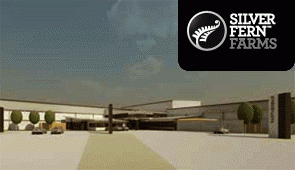
By Allan Barber
 In spite of the slow start to the North Island season, currently 18% behind last year, forecasts suggest it will catch up, even exceed last season.
In spite of the slow start to the North Island season, currently 18% behind last year, forecasts suggest it will catch up, even exceed last season.
But it is certain to come late with dairy farmers likely to keep milking as long as they can, unless we get an unseasonably cold early winter.
What’s also certain is there will be plenty of processing capacity to handle it, especially when the Te Aroha rebuild is finished.
Last year the North Island’s peak weekly cattle kill reached 57,000 head which indicates a total capacity without Te Aroha of more than 1.1 million head or 65% more than the annual kill. By the time Te Aroha is factored in at a theoretical 200,000 annual capacity, the excess is up to 1.3 million or 75%.
This looks very much like an ideal scenario for a procurement war with the peak kill able to be swallowed up in short order.
The main battleground is obviously the top half of the island where AFFCO and Silver Fern Farms each have three plants as soon as Te Aroha is operational, while Greenlea has two, Auckland Meat Processors and Universal one each. Total capacity in this region will be about 400,000 more than in the lower North Island where there are seven export plants - SFF and Riverlands each have two, AFFCO, Taylor Preston and Alliance one each.
The completion and start up of SFF’s Te Aroha plant is clearly critical to the question of available capacity and it is entirely possible, given rumours of delays and lack of rebuild activity, it won’t actually happen until after the peak has passed.
However Keith Cooper maintained recently the plant would be finished at the end of March, although I have also heard early May is the soonest it could be complete. He indicated plant throughput would not be much different from the previous volume of 120,000, well below the suggested maximum annual capacity.
In answer to a query about the plant’s capacity, Cooper said total capacity was not as important as what you do with that capacity.
I’m still trying to work out exactly what he meant; probably plant throughput is all about type of species processed and amount of added value obtained, rather than straight volume.
But that should apply to all processors.
All the plants except Auckland Meat Processors are either relatively or very modern, many of them built or rebuilt within the last 20 years and all are efficient, so the differences come down to collective agreements, manning levels, shift configuration and expertise of the respective workforces.
Other important factors are the cost of livestock which in theory should be pretty similar and product destination and marketing capability which have a significant impact on individual company profitability, but are not the direct responsibility of plant management.
No processor will willingly shed market share, which means competition will be strong, but equally none will be keen to build up inventory at high procurement prices without market demand to keep inventory levels within reasonable limits.
An interesting side issue which has little to do directly with beef capacity is Keith Cooper’s resignation from the board of B&LNZ, just before director elections and next month’s AGM. He has questioned the effectiveness of industry good organisations, which suggests a degree of frustration with the farmer representative body’s direction, particularly its intrusion into areas generally considered the domain of commercial operators.
It appears he resigned last Friday just after being advised as a board member of B&LNZ’s successful application for PGP funding in partnership with several other industry partners including some other processors. The project for which funding has been granted will be directed at improvements behind the farm gate for which the meat industry has been pushing strongly. However Cooper would probably argue the FarmIQ project undertaken by SFF and partners is already aimed at achieving a similar outcome.
The irony here is the suspicion by other processors that SFF has received more assistance than anyone else with joint promotional funds in the UK, used among other things to support discounted shelf prices in Tesco supermarkets for SFF’s retail ready lamb cuts.
Meat industry politics are never far away from operational questions.
-----------------------------
This story first appeared in Farmers Weekly. It is used here with the permission of the author.
Allan Barber is a commentator on agribusiness, especially the meat industry, and lives in the Matakana Wine Country where he run a boutique B&B with his wife. You can contact him by email at allan@barberstrategic.co.nz or through his blog at http://allan.barber.wordpress.com.

We welcome your comments below. If you are not already registered, please register to comment
Remember we welcome robust, respectful and insightful debate. We don't welcome abusive or defamatory comments and will de-register those repeatedly making such comments. Our current comment policy is here.